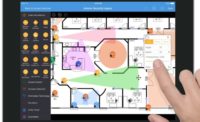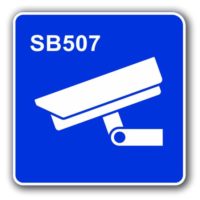The Lindsay Automotive Group has served the Washington, D.C. metro area since 1949. Three generations of Lindsays have been involved in the daily operations of the dealership family that now includes Lindsay Cadillac and Lindsay Lexus of Alexandria, Va.; Lindsay Ford of Wheaton, Md.; Lindsay Chevrolet, Saturn Service Center, and Isuzu Commercial Trucks of Woodbridge, Va.; Lindsay Volkswagen of Dulles in Sterling, Va.; and Lindsay Collision Center in Springfield, Va.
The Lindsay Automotive Group has a total of 14 linked buildings, each with cameras and DVRs. Because real estate comes at a premium in the Washington, D.C. metro area, Lindsay keeps cars in lots throughout the region, including a hotel parking lot. Although there is 24/7 security at the hotel parking lot, a number of cars have been lost to theft.
Two years ago, Lindsay purchased a vacant lot near its Lexus dealership. Until a camera system was installed, Lindsay management would not store cars on the lot, demonstrating the value of the system to them. Initially, David Jablonski, president of Burtel Commercial Security Systems, a security dealer based in Alexandria, Va., installed a 24-camera system with video motion detection and DVRs.
“From the very beginning, we received 30, 40, or even 50 alarms per night,” said Jablonski. “And when it rained, it was even worse. Every time a car went down the street outside of the fenced-in area it would trigger another alarm. We knew we had an issue — a big issue. There was no way we could turn the system over to our customer like this.”
To tackle the problem, Jablonski looked to his video monitoring central station, Amcest, and his video consultant, Interactive Solutions Group, to come up with a true analytics-based solution. Independent of each other, Maury Fuhrer, chief information officer of Amcest, and Chris Brown, president of Interactive Solutions Group, recommended Checkvideo from Cernium, Reston, Va., to deliver a system with advanced video analytics that filters out random motion and addresses other issues affecting outdoor video surveillance. CheckVideo seamlessly integrates with the Amcest proprietary video production system as well as other leading automation software providers. It includes software as a service (SaaS) and several hardware options that allow it to be placed in virtually any indoor, outdoor or remote location.
To start, the Burtel team put CheckVideo on the biggest problem cameras — in particular, the four cameras at the front gate, where motion from the street constantly activated the motion-based system. Within the first couple of days, they were able to see the results.
“One night we had over 200 alarms out of the original system and zero alarms out of CheckVideo,” said Jablonski. “So I called my tech who installed the system and asked him to go to the lot and verify that the CheckVideo system was in fact up and running. He checked it out and said that it was working perfectly — you could hear the relief in his voice. I said, ‘That’s incredible.’ So we knew that we had found a video analytics product that really worked, and we purchased more CheckVideo units to cover the rest of the cameras.”
Paul Moline, chief information officer of Lindsay Automotive Group, observed, “The cameras and DVRs are nice, but if you’re not monitoring the system, the chances of you actually catching someone in the act are slim to none. It frustrates me more to watch the recording and see it happening when it’s done and gone. And nobody knows who it is, not the police, not anyone. So when you have a solution like CheckVideo, you feel a lot more comfortable that you’ll be able to respond as soon as something happens where it’s not supposed to be happening.”
The lot now has six CheckVideo Gateways that connect to 22 fixed analog cameras (four cameras can connect to each device), DVRs and the Internet through a standard broadband connection. Because CheckVideo is a hosted solution, Lindsay did not need to invest in additional IT equipment, servers or software at the site. Cameras set on all four corners of the lot pick up a person as soon as they cross the fence. Lines of cars are also monitored. When CheckVideo detects a person or vehicle where it doesn’t belong, it sends a 10-second video clip of the event over the Internet to the Amcest monitoring interface for personnel to quickly assess the video and then verify or retire the alarm. The video clip is also stored in the cloud. A sixth CheckVideo Gateway uses the Sprint cellular network and is redundant on four of the key cameras as a backup in case the Internet goes down. Two additional pan-tilt-zoom cameras do not utilize CheckVideo, but allow Amcest monitoring personnel to follow any suspicious activity around the site once an alarm is triggered.
“The device using Sprint wireless as a backup is really beneficial,” noted Moline. “A lot of times you don’t know if you’ve lost an Internet connection. I happen to get alarms when it goes down, but it occurs often enough that many times I ignore it. It’s only when I get a second one that it’s an escalation.”
The CheckVideo system has paid for itself many times over since installation. Moline pointed out that Lindsay has probably never gone six months without losing a car. “If you can go that long with what we’re paying for the system, or better yet, if you catch the guy and watch him go to jail instead of just watching the video after the fact, that’s your return on investment right there,” he remarked.
In addition, CheckVideo provides significant cost savings in monitoring fees because it triggers on real events instead of random motion. In one month, the video motion detection system produced 1,664 events and 1,464 false alarms. However, in the same month, CheckVideo produced just 200 events and zero false alarms. The difference represents savings of more than $7,000 in monthly monitoring fees for Lindsay.
Fred Rosenfeld, president of Amcest, commented: “Amcest chose to partner with CheckVideo because it allows us to tweak the analytics and gauge the activity level. CheckVideo filters out most of the signals a motion-based system would send, allowing us to exponentially lower the usage fees.”
The end result of installing the CheckVideo system is a win-win-win for Lindsay, Burtel and Amcest. Lindsay’s car lot of Lexus SUVs and Cadillacs has enhanced security and the system generates far fewer events and false alarms, producing significant cost savings; Burtel has increased customer satisfaction and solidified an ongoing client relationship; and Amcest is able to reduce the number of events and false alarms coming into its monitoring center. For Burtel, the experience has also opened up a universe of opportunities for upgrading their existing customers to CheckVideo. As Jablonski observed, “The applications for CheckVideo are really limitless.”
|
PROJECTS in the News
Regis University in Denver deployed Brivo’s ACS WebService for managing security at its new CyberSecurity Education Center. Security Install Solutions, a Denver-based integrator, installed the system. The system helps protect the expensive equipment that CyberSecurity Education Center has on site and also helps prevent unauthorized entry to secured areas — an important concern, considering that the center receives a lot of visitors. “With Brivo, we have what I call constant vigilance monitoring and that reduces our worry factor,” said Dan Likarish, director of the Center on Information Assurance Studies at Regis University. ■ ■ ■ Milestone Systems XProtect Professional video management software is integrated with MobiDEOS mobile client access at the Akron Zoo in Ohio, to provide video surveillance to monitor animal health and behavior. Other components for the zoo’s surveillance installation include a Windows server with a large storage device and a mix of Axis and Mobotix network video cameras. MobileCamViewer from mobiDEOS provides wireless remote access for the zoo’s veterinarians to monitor animals from home or elsewhere. Each animal holding area has a display monitor outside the door that shows a live video feed from various views inside the area, so keepers can check proper containment and location of potentially dangerous animals before entering. ■ ■ ■ Napco’s C100STE dual technology microwave/PIR detector was installed at the “Stonewall” Jackson Shrine at the Fredericksburg & Spotsylvania National Military Park to protect the “Death Room” where General Jackson died. The C100 devices dynamically adjust to their environment to enhance immunity and reliability, Napco says. ■ ■ ■ Riverdale Neighborhood House, a nonprofit community center in Bronx, N.Y., chose Grid Squared Systems to provide a perimeter security system to protect its neighborhood pool from trespassing, property damage and theft. Grid Squared, an Optex certified systems integrator, recommended using Optex Redwall passive infrared motion sensors, which use battery-operated wireless transmitters. If an intrusion is detected, the system sends an email message to alert authorities. “The system has not only delivered the performance we needed, it proved cost-effective and easy to use,” said Daniel Edwards, executive director at Riverdale Neighborhood House. “We’ve already deterred several intruders from taking a night swim, which protects them as well as our organization and program participants.” |







